Truman State University Department of Art
Juror: Nick Satinover, Associate Professor of Print Media, Middle Tennessee State University
![]()
Ophelia Parrish 1114
Browse below to see the full collection currently on display at the art gallery.


In the artist’s words: “This is a surrealist expression of a fruit bowl where the fruit has been turned into the form of a woman’s nude body. In this drawing I am exploring the role of the female nude, historically used as the object of art rather than the subject, by ironically turning the women into objects.”



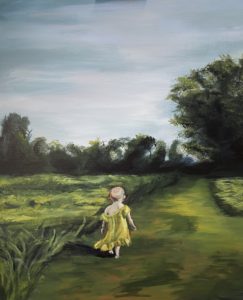

In the artist’s words: “Fish Stick is a woodworking tool called a push stick that helps hold wood in place while using a saw. It was made as part of a set, and the others are currently in use in the sculpture workshop.”

In the artist’s words: “For many years, I have had difficulty connecting with the parts of my body that mark me as female. Part of what makes me uncomfortable with my female anatomy is the sexual connotation that society projects onto women’s bodies. I don’t think of myself as a particularly sexual person and the idea that people don’t perceive me this way because of my body is unsettling. This abstracted form articulates a body free from biological constraint and social expectation.”

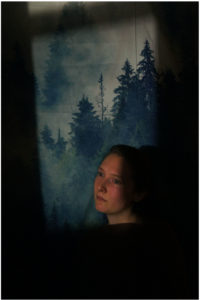

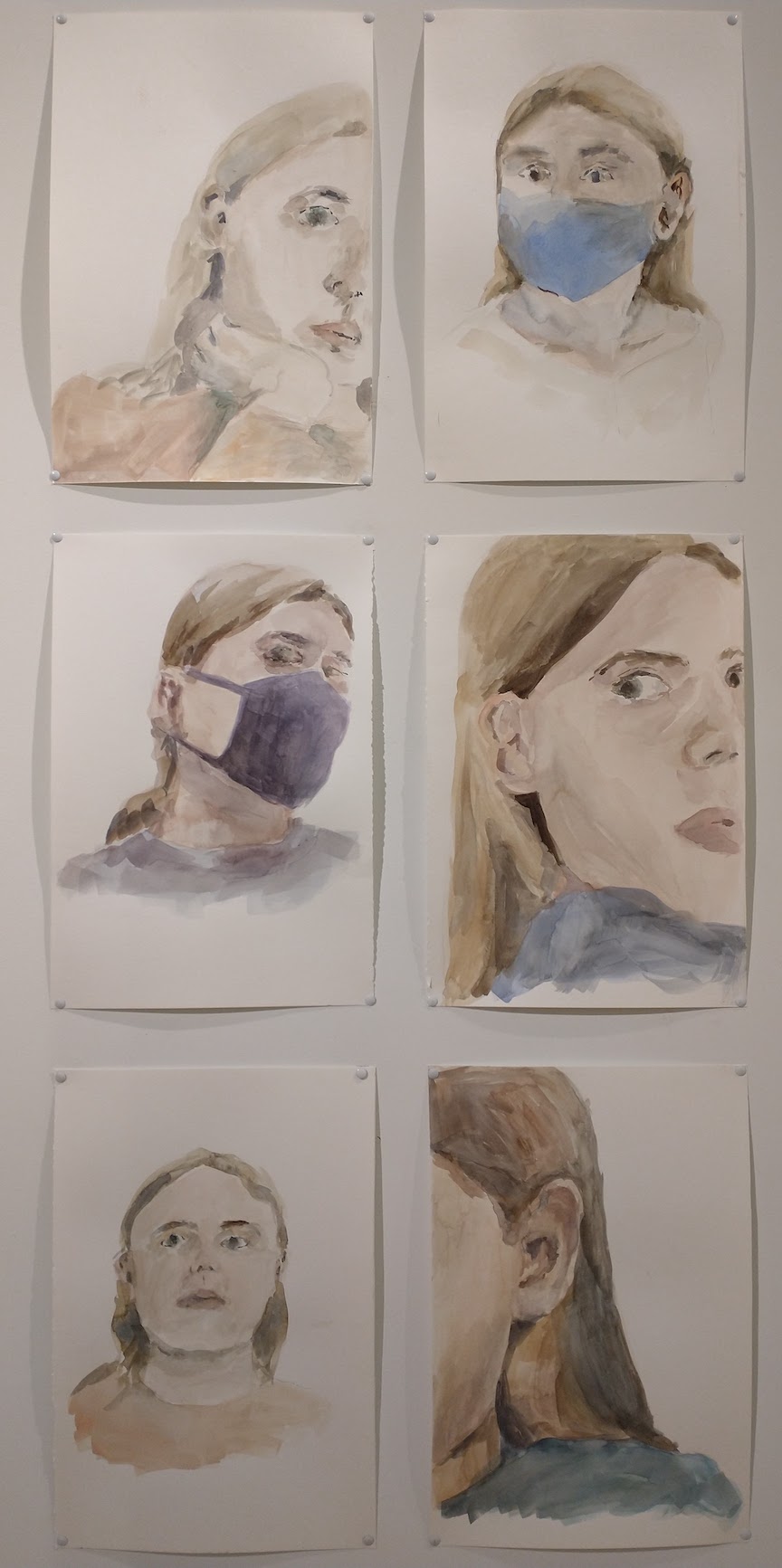





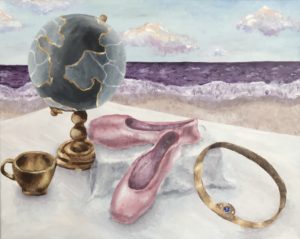

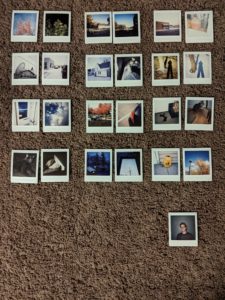
In the artist’s words: “Instants is a collection of notes I made the past six months with a camera. Usually scrambling after a eureka and taken with an imprecise camera, many include happy accidents, and all were disjointed until edited and laid out. Pairs and sequencing revealed patterns in my sight as much as patterns in the world.”
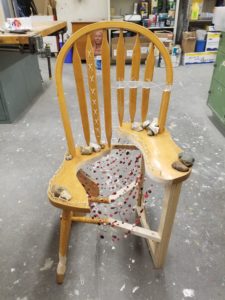
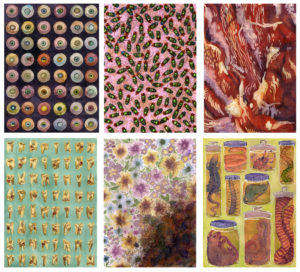
In the artist’s words: “A Fly in the Ointment is an exploration of how things that are disturbing, disgusting, or uncomfortable (disembodied parts, prolonged eye contact, flies, raw meat, rotting teeth, mold, etcetera) can draw us in and hold our attention. They become zoomed in, overwhelming to our senses, and seemingly never-ending or all-consuming–anything that captivating, however, can also be beautiful. Every piece in this series is something that I personally find disturbing and fixate on heavily but am drawn to for its objective beauty, and I achieved this by making it expand past the frame or repeat endlessly in a sort of pattern; the gruesome is rendered as brightly colored, beautiful prints.”
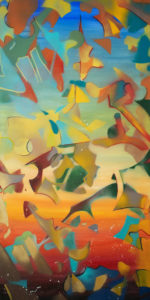
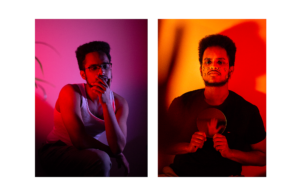

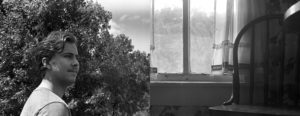
In the artist’s words: “I have always found beauty in an effortless state of happiness–the instant glimpses in which you can truly see a person let go of the world and breathe. These moments inspire me to enjoy the preciousness of what is right in front of me. With the start of a global pandemic, it soon became important, more so now than ever, to document my loved ones. The struggle in capturing these snapshots is that as soon as a camera is present, all sense of candidness begins to diminish. I often include blurry or out of focus pictures in this body of work to show that, just as quick as a breath leaves the lungs, a moment can vanish in time.”


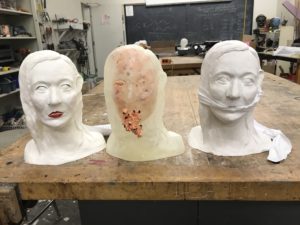
In the artist’s words: “This work is about the expectations put on women by society, such as the expectation to have children, be quiet, and to wear makeup.”
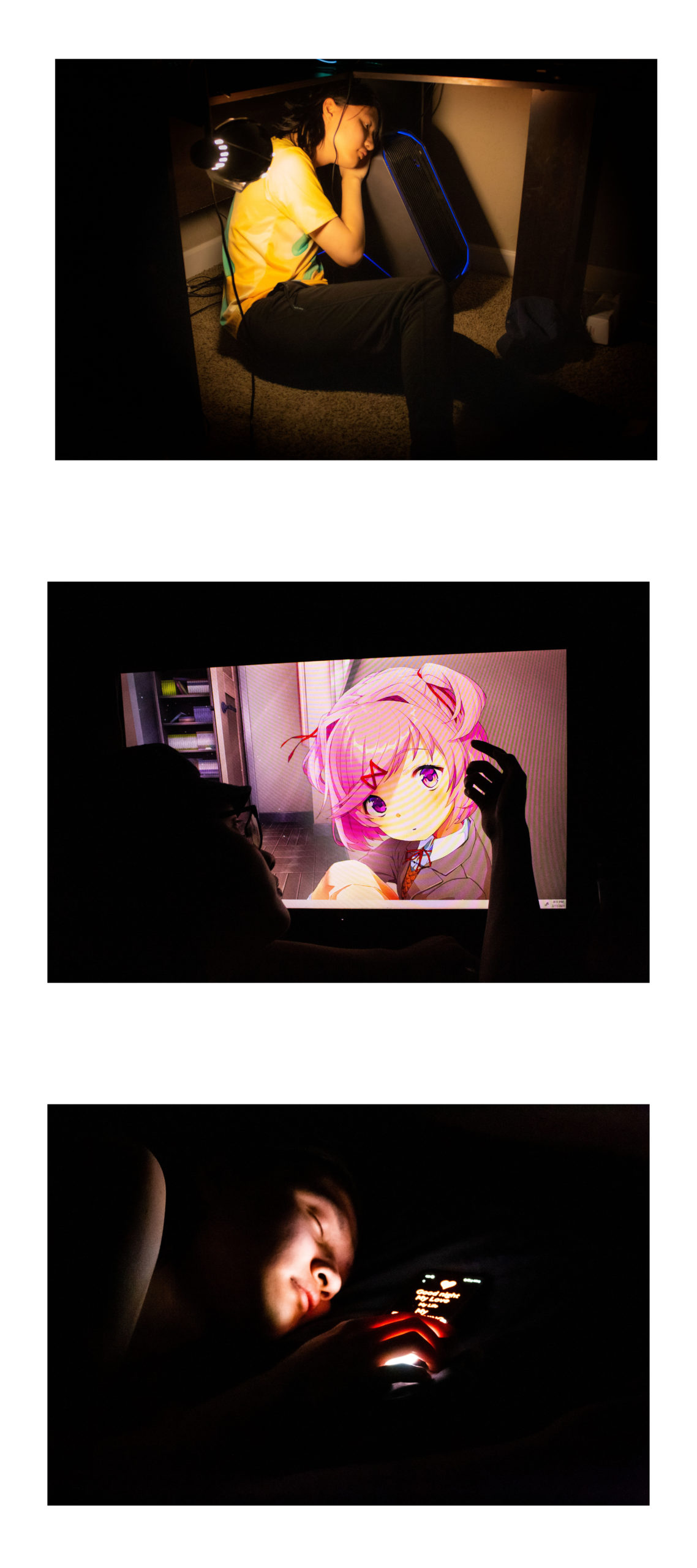
This is a series of images that shows what people tend to rely on in the pandemic. We need technology. It is a part of our life. Maybe there are many critisms of it, but in the end, it is still our companion when we’re alone.

In the artist’s words: “Patterns in Pieces explores the overarching theme of patterns and the specific patterns that are encountered while sewing. Obvious patterns include the concise rows of stitching and the pattern of the pieces in this composition, but this piece also brings to mind the destructive pattern of throwing away perfectly good clothes due to the rise of the fast fashion industry. Previous generations constructed their garments by hand, tediously cutting out each pattern piece and stitching them together with care so they would last for years. If we don’t break the pattern of filling landfills with fast fashion castaways, will our world eventually fall to pieces?”
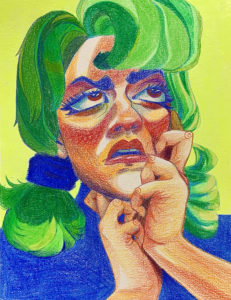
In the artist’s words: “This work represents myself this semester.”

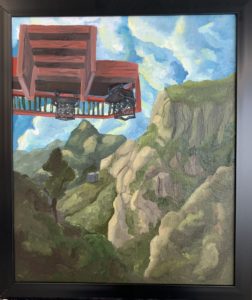


In the artist’s words: “This work explores the relationship between a city and its residents, particularly in regards to transportation. The veins and arteries, in a city without decent public transit, become clogged and dysfunctional while better planned cities tend to avoid these maladies. I wish to see healthier design choices as the United States contemplates spending trillions of dollars on infrastructure in the next few years.”
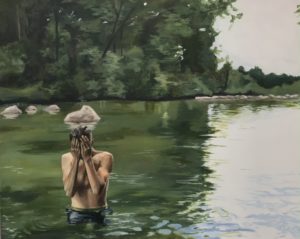
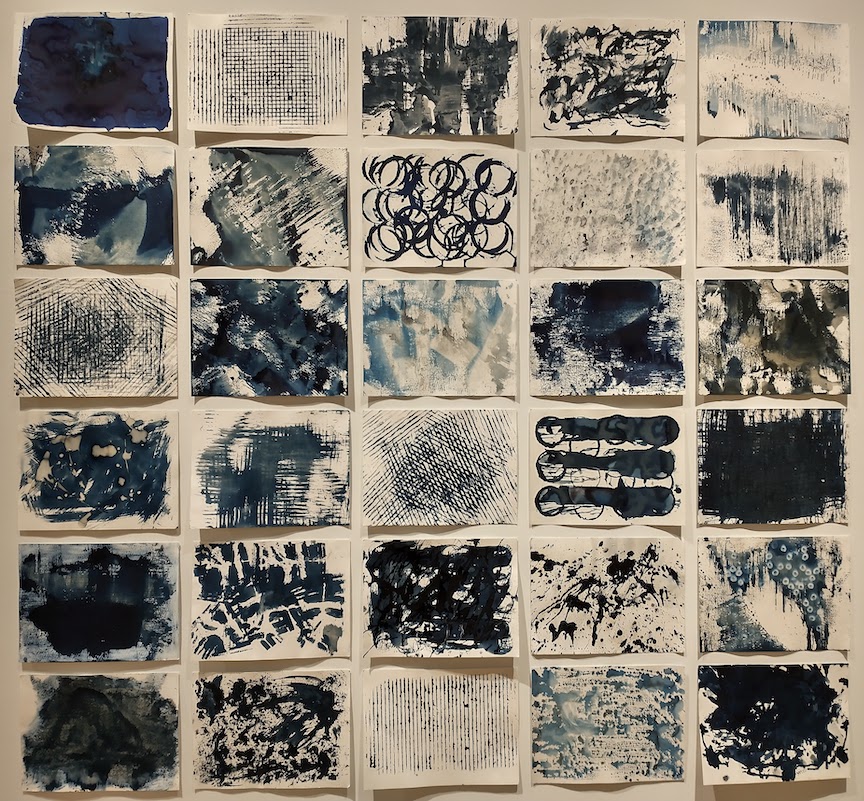
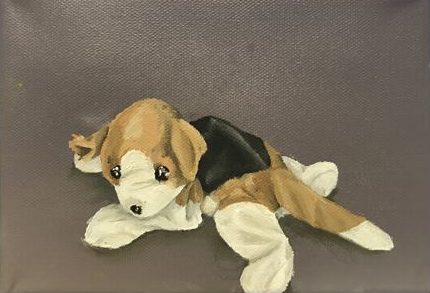
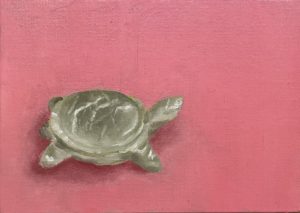
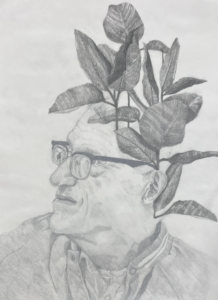
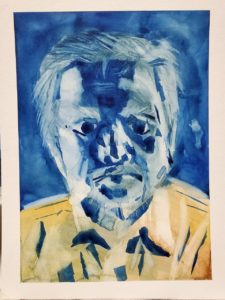
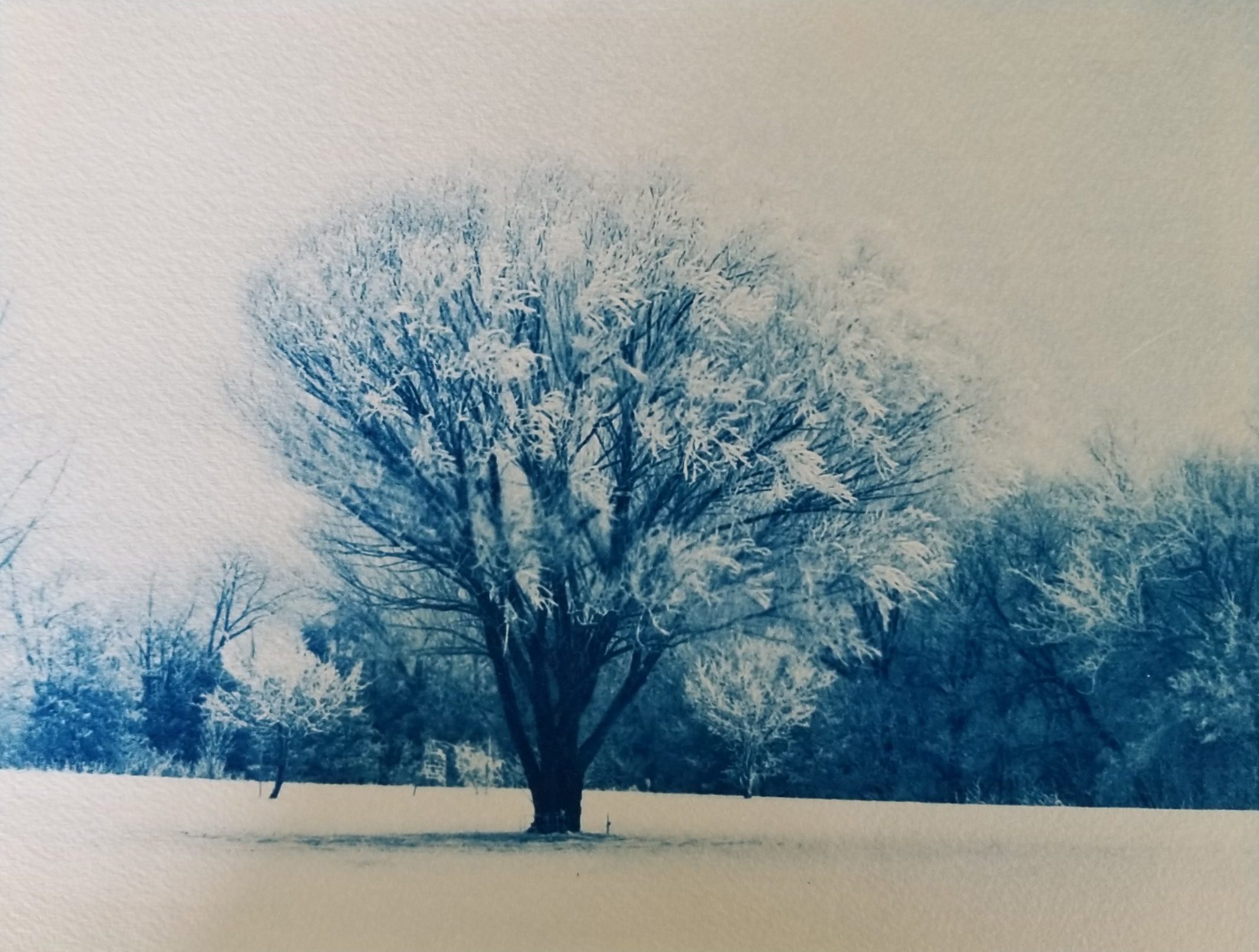
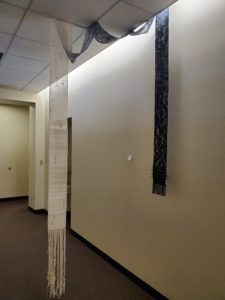
In the artist’s words: “The lifelong weight and permanent rippling effect caused by grief is visualized in Sink or Swim. Grief is not just an emotion, it is a state of being that lingers no matter how much time passes. I am reflecting on the loss of my grandfather, an avid fisherman, and my experience with watching him slowly lose himself to Alzheimer’s.”
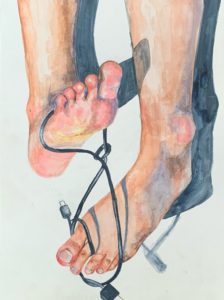
In the artist’s words: “This work represents the effects on me of social media, a polar vortex, and a pandemic. The entire situation often makes me feel stuck. The wire around my feet represents the feeling of being stuck in a repetitive cycle of using social media to distract myself from the fact that I am seeing the outside world but having trouble with interacting with it. The wire tangled around my feet is stopping me from moving further, but I must try to untangle it.”

Stephen Poindexter Orozco, Orange is the Color Inside of My Chest, Video, JINS: The Art and Science of Creativity
In the artist’s words: “This poetic free verse short film acts as a culmination of my growth throughout college. It touches on my familial relationships and my sense of cultural and physical belonging—and how my queerness has influenced each of these things. The film details the challenges I confront in the context of these relationships, and my desire to transcend negative emotions in search of true belonging.”
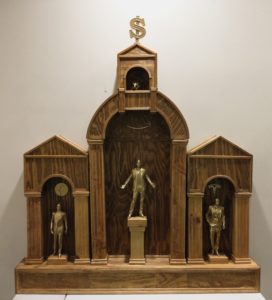
In the artist’s words: “This work is a satirical shrine that replaces Catholic imagery with capitalist symbols and figures. It is a criticism of individuals who idolize the ultra-wealthy and defend the massive amounts of wealth these plutocrats hoard despite the evident harm that wealth inequality causes in our society.”

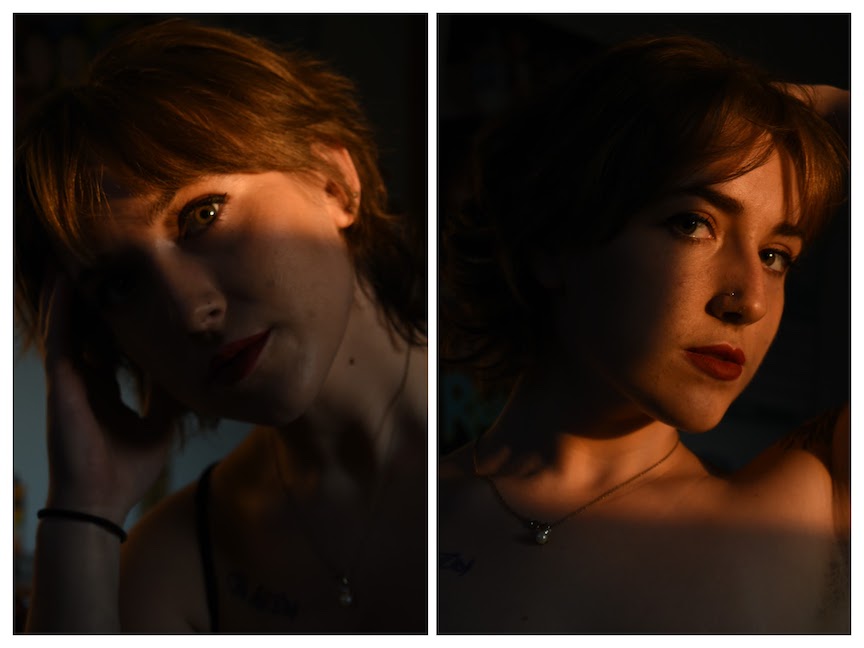
In the artist’s words: “This project is about representation, and it’s also an intimate look into the parts of my life I wish to share with you. The moments when the sun casts warm light through my windows, inviting you to see all the scars and tattoos that mark my body. When I create my photos, I often stare down the lens, fully aware that there are silent viewers watching. It’s empowering to gaze back at a ghost audience. I hope that my photos bring inspiration to those who feel unworthy of desire because of how they look. Afterall, we all deserve to be not only seen, but accepted.”

